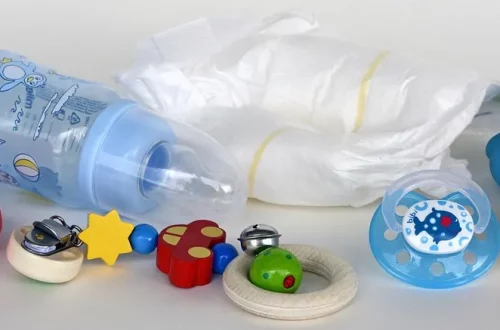
Deliciously Sweet: Exploring the World of Milky Candy Treats
The world of confections is a delightful realm where sweetness reigns supreme. Among the vast array of treats that tantalize our taste buds, milky candies hold a special place. These creamy, rich delights have the power to evoke nostalgia and create new memories, bridging generations through their irresistible flavors. As we indulge in these sugary treasures, we often find ourselves transported back to simpler times—whether it’s the joy of unwrapping a piece of candy or sharing a moment with loved ones over a sweet treat.
Milky candies come in various textures and forms, from soft and chewy to hard and crunchy. Each type offers a unique flavor profile, often enhanced by the addition of other ingredients like nuts, chocolate, or fruit. This versatility makes milky candies not just a treat for the taste buds, but also a source of creativity for confectioners who craft these delightful morsels. The art of making milky candy has evolved over time, influenced by culinary traditions from around the world, resulting in a rich tapestry of flavors and styles.
As we journey through the world of milky candies, we discover the myriad ways in which these treats can bring joy, comfort, and a sense of connection. Whether enjoyed on a quiet evening or shared during celebrations, milky candies have an innate ability to sweeten life’s moments. Let us delve deeper into the enchanting universe of milky candy treats and uncover what makes them so beloved.
Origins and Cultural Significance of Milky Candies
The origins of milky candies can be traced back to ancient civilizations, where sweeteners like honey and sugar were combined with milk to create delectable treats. The use of milk in confectionery not only adds creaminess but also enhances the overall flavor, making it a preferred ingredient in many cultures. In regions where dairy farming is prevalent, such as Europe and North America, milky candies became a staple, evolving into various forms that reflect local tastes and traditions.
In Europe, for example, milk-based sweets like toffees and caramels have a long-standing tradition. The British have perfected the art of making creamy fudge, often flavored with ingredients like vanilla or chocolate. Similarly, in Italy, the famous “torrone” combines milk, sugar, and nuts, creating a chewy yet crunchy texture that is enjoyed during festive occasions. Each culture has contributed to the rich history of milky candies, adding unique ingredients and techniques that enhance their appeal.
In addition to their delicious taste, milky candies often carry cultural significance. They are frequently associated with celebrations, rituals, and holidays. For instance, in many countries, milky candies are given as gifts during birthdays, weddings, and other significant life events. This practice not only symbolizes love and affection but also fosters a sense of community and togetherness. The act of sharing these treats can create lasting memories and strengthen social bonds, making milky candies more than just a sweet indulgence.
Furthermore, the rise of artisanal candy-making has brought renewed interest in milky candies. Small batch producers are experimenting with traditional recipes and modern twists, infusing unique flavors and ingredients that reflect contemporary tastes. This revival has allowed consumers to appreciate the craftsmanship behind milky candies while also exploring new flavor combinations that push the boundaries of traditional confectionery.
Popular Varieties of Milky Candies
The world of milky candies is vast, encompassing a variety of textures, flavors, and forms. Among the most popular varieties are caramels, fudge, and milk chocolate confections. Each type has its own unique characteristics that appeal to different palates.
Caramels are perhaps the most beloved milky candy, known for their rich, buttery flavor and chewy texture. They are made by cooking sugar and milk together until they reach a golden-brown color. Caramels can be enjoyed on their own or used as a filling for chocolates, adding a delightful layer of sweetness. Some variations include sea salt caramels, which balance the sweetness with a hint of savory flavor, making them a favorite among gourmet candy enthusiasts.
Fudge is another classic milky treat, characterized by its creamy consistency and rich flavor. Traditional fudge is made by combining sugar, butter, and milk, which are cooked to the soft-ball stage before being cooled and beaten to achieve a smooth texture. Fudge can be flavored with a variety of ingredients, such as chocolate, nuts, or fruit. The possibilities are endless, allowing for creative variations that cater to diverse tastes.
Milk chocolate confections are perhaps the most recognizable form of milky candy. The combination of cocoa solids, milk, and sugar creates a smooth and creamy texture that melts in your mouth. Milk chocolate bars, truffles, and bonbons come in countless varieties, often filled with additional ingredients like caramel, nuts, or fruit. This versatility ensures that there is a milk chocolate treat for everyone, making it a staple in candy shops around the world.
In addition to these classic varieties, innovative candy makers are constantly experimenting with new flavors and textures. From matcha-infused milk chocolates to lavender-flavored caramels, the possibilities are endless. This creative spirit keeps the world of milky candies exciting and ever-evolving, ensuring that there is always something new to discover.
The Art of Making Milky Candies at Home
Creating your own milky candies at home can be a rewarding and enjoyable experience. With the right ingredients and techniques, anyone can craft delicious treats that rival store-bought options. The process not only allows for customization but also brings a sense of accomplishment and joy.
To start, it’s essential to gather the right ingredients. Basic recipes for milky candies typically require sugar, milk, butter, and flavorings. For caramels, the key is to cook the sugar to the appropriate temperature, achieving that signature golden-brown color. A candy thermometer can be a helpful tool in ensuring accuracy during the cooking process.
When making fudge, the technique involves bringing the ingredients to a boil and then cooling them before beating to achieve a smooth texture. This can be a fun activity to do with family or friends, allowing everyone to participate in the candy-making process. Experimenting with different flavorings and mix-ins, such as nuts or dried fruits, can add a personal touch to your creations.
Presentation is also an important aspect of homemade milky candies. Once cooled and set, they can be cut into squares or molded into fun shapes, making them perfect for gifting or sharing at gatherings. Wrapping them in colorful packaging or presenting them in decorative jars can elevate the experience and make your treats even more special.
Additionally, making milky candies at home allows for the exploration of healthier alternatives. Using natural sweeteners, such as honey or maple syrup, and incorporating ingredients like coconut milk or nut milks can create delicious variations that cater to dietary preferences. This adaptability makes home candy-making an appealing option for those looking to indulge without compromising on their health goals.
In conclusion, the world of milky candies is rich with history, variety, and creativity. Whether indulging in a classic caramel, savoring a piece of fudge, or experimenting with homemade treats, these sweet delights have a way of bringing people together and creating cherished memories. So grab your ingredients, gather your loved ones, and embark on a sweet adventure in the art of candy-making.
**Disclaimer**: This article is for informational purposes only and should not be considered medical advice. For any health concerns or medical questions, please consult a healthcare professional.




